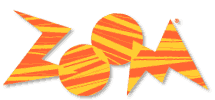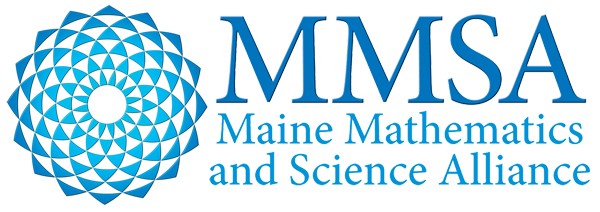STEM in your program
Interested in improving your afterschool STEM program or getting involved in afterschool STEM for the first time? Check out our funding guide and explore some of the best curriculum, professional development, and evaluation tools specifically developed for teaching STEM in the out-of-school-time environment.

4-H provides STEM curricula for students in grades K-12. Curricula cover a wide range of topics including: aerospace, computers, electricity, physics, kitchen chemistry, and more. Some are available for free, while others have an associated cost.

Afterschool Math Plus contains four themed guides focused on art, music, sport,s and justice. The hands-on, inquiry-based curriculum, which targets students from low-income families (grade 3-8), includes authentic STEM experiences written for informal settings and uses research based strategies to support STEM identity. This curriculum was developed by the Education Equity Center at fhi360.

The Apex Curriculum consists of eight units focusing on birds, engineering, water, sound, rocks, food, air, and the sun. Each unit includes four lessons that can be adapted to suit individual programs. The curriculum is currently being used by Children Investigating Science with Parents (CHISPA) - a national collaboration between the Frost Museum of Science, the National Council of La Raza, the ASPIRA Association, and a network of science museums – to promote family engagement in STEM. All curricula are available in English and Spanish.

BirdSleuth K-12 offers a variety of free and low-cost materials created to engage youth in ornithology and citizen science. The Afterschool Investigators: Nature Detectives curriculum introduces youth in grades 3-8 to the scientific process through hands-on activities. Developed by the Cornell Lab or Ornithology.

Crazy 8s Club is a free afterschool math program with 32 weeks of hands-on activities and games, designed for elementary students of all math abilities. From Bedtime Math.

Tinkering Activity Resources are a compilation of free and low-cost activity guides, books, and resources created to engage youth in STEM by learning from doing, also known as tinkering. From the California Tinkering Afterschool Network, a project of the Exploratorium.

Creative Computing is a free curriculum to introduce students in grades K-8 to computer science using the Scratch programming platform. The curriculum is available in English, Spanish, Chinese, and more.

Creativity Catapult is an online collection of free activities developed to promote creativity skills in children ages 2-14. Activity topics include sports and games; storytelling; technology; visual arts; science; performing arts; language and word games; making, building, and tinkering; nature; and cooking. From the Center for Childhood Creativity at the Bay Area Discovery Museum.
.jpg)
Curiosity Machine is an online community where students, educators, and parents can find resources and activities that relate to real-world science and design challenges. Curiosity Machine walks students through the steps of problem-solving and provides feedback from mentors on students’ work. Curiosity Machine is powered by Iridescent.

Design Squad, a popular PBS Kids show, provides activities and curricula guides to teach 9- to 12 -year-olds about engineering design. The focus areas—such as electricity, force, simple machines, and transportation—include activities that allow students to build their own robots, circuits, games and more.

EiE®, the award-winning curricula division of the Museum of Science, Boston, develops research-based, classroom-tested programs that empower children to become lifelong STEM learners and passionate problem solvers. Our flexible digital, print, and blended hands-on programs bring engineering, science and computer science together to prepare today’s students for the fast-paced, global, technology-savvy world. For grades 3-8, explore Engineering Adventures® and Engineering Everywhere® a multidisciplinary engineering curriculum designed for flexible classroom settings.
.jpg)
Explore Science: Zoom into Nano is a series of five lessons designed to engage students with nanoscience, nanotechnology, and nanoengineering. Zoom into Nano was developed to encourage afterschool partnerships with science centers and museums, so check with your local institution to see if they’re interested! From the NISE Network.

Exploratorium After-School Snacks are a collection of science-based activities designed for afterschool. These free activities explore the science of the world around us, engaging students in lessons on static electricity, simple motors, and more using household materials.
Family Creative Learning is a workshop series that engages children and parents to learn together using Scratch and MaKey Makey. The free online Facilitator Guide includes everything you need to plan for your own Family Creative Learning Workshops. Watch our webinar for more information on Family Creative Learning from creator Ricarose Roque.

Five Stars Curriculum includes six free lesson plans that explore how light from the electromagnetic spectrum is used as a tool for learning about the sun. The curriculum was designed for middle school participants in afterschool programs. Developed by the University of California Berkeley’s Space Sciences Laboratory with help from Girls Inc.

Girlstart, implements innovative, high quality informal STEM education that inspires girls to transform our world with STEM. Girlstart After School meets once a week throughout the school year and engages girls in hands-on STEM activities related to careers in STEM fields. Girlstart’s core programs foster STEM skills development, an understanding of the importance of STEM as a way to solve the world’s major problems, as well as an interest in STEM electives, majors, and careers.

Howtosmile is a collection of more than 3,500 free science and math activities curated by educators from museums, public television stations, universities, and more. Filter activities by age group, material cost, and learning time to find activities that best suit the needs of your program. A project of the University of California, Berkeley's Lawrence Hall of Science.

LinkEngineering is an online community and resource portal for educators looking to engage students in grades K-12 in engineering. Resources are posted by LinkEngineering community members and include a wide variety of activities and curricula.

NASA Wavelength is an online collection of peer-reviewed Earth and space science resources for all grade levels. Explore the NASA Education site as well for many exciting ways to bring space science into your afterschool or summer program.

The Design It! and Explore it! curriculum series consists of 13 introductory science and engineering projects to promote the development of basic engineering principles, exemplify the design process, and promote problem solving and creativity. Designed for elementary students and the afterschool environment by the National Partnerships for Afterschool Science and the Education Development Center with funding from the National Science Foundation.

Plum Landing is an environmental science initiative designed to engage children ages 6-9 with hands-on science activities. This includes three curriculum pathways designed for afterschool, clubs, and camps, as well as online learning games and environmental webisodes. Developed by PBS Kids with WGBH Boston.
.gif)
Science After School Consumers Guide is a searchable database of high-quality, hands-on science curricula that have been reviewed by content experts and afterschool providers. Materials include semester- and year-long curricula, activity kits, instructor guides, and websites that offer content appropriate for afterschool programs.

Science Action Club is a network of afterschool programs supported to offer citizen science to students in grades 5 to 8. Members receive online and in-person trainings, curricula, and supplies. From the California Academy of Sciences.

Science Club offers free curricula on the science of food, sports, movies, medicine, engineering, and clean water. Designed by Northwestern University scientists and tested with Boys & Girls Club members.

SciGirls' activity guides focus on engineering, the science of living things, physical science, and more. While the guides are designed with girls in mind, activities can be used with all learners and are available in English and Spanish.

You for Youth's STEM-rich making activities were designed specifically for 21st Century Community Learning Center programs. Activities include science journals, circuit boards, scribbling machines, and nature bots. Instructor guides and videos are available free online. While created for upper-elementary school students, the activities can be adapted for students of all ages. From the Institute of Museum and Library Services, the Exploratorium, and the U.S. Department of Education.

ZOOM is a series of easy-to-run activities that can be used and modified for all ages. Explore science with ZOOMsci, engineering with ZOOMbuild, and the environment with ZOOMgreen. From PBS Kids.


Assessing Women and Men in Engineering Project is a set of surveys and assessment tools you can use to evaluate your afterschool STEM program.
.png)

Afterschool Alliance Webinars are a great resource for learning about pressing issues in the afterschool field. We’ve done several STEM-focused webinars—topics include Next Generation Science Standards, strengthening partnerships, “making,” and computing. Browse the archive for a full list. You can also sign up to be notified about upcoming webinars in advance.

InformalScience.org is a one-stop shop for the informal science community, including afterschool STEM programs, science centers and museums, zoos and aquariums, broadcast media, and other out-of-school-time science learning environments. Browse project descriptions and evaluation reports from the National Science Foundation and other federally funded projects. You can also access hundreds of research and reference materials. All resources are sortable by “afterschool”!

Click2SciencePD is an online professional development resource for out-of-school-time providers. It focuses on 20 research-based skills for facilitating STEM and provides video-based learning modules. The site also offers guides for staff training, meetings and coaching pieces to further opportunities for professional development.

The ACRES project supports out-of-school providers in rural settings. Front line staff come together online and in-person to share, discuss, and receive coaching. From the Maine Mathematics and Science Alliance and the Noyce Foundation.

PBS Zoom Sci Training is an interactive website that teaches professional STEM mentors how to lead engaging science activities for kids ages 8 to 11.

SEDL’s Instructor’s Guide to the Afterschool Training Toolkit gives afterschool instructors the resources they need to build fun, innovative and academically enriching activities that engage students, extend their knowledge in new ways, and support academic achievement. The website provides three separate afterschool guides for math, technology and science with resources including lesson plans for program enrichment.

You for Youth provides online training and technical assistance for 21st CCLC practitioners. The website has a “Tools” component that is specifically designed to educate staff on STEM programming. There are also numerous resources for STEM education in the afterschool setting, including “Trainings to Go,” a series of hour-long trainings that consist of a PowerPoint presentation, handouts and training guides to help customize professional development plans, and “Training Starters,” which are tips to help you create training sessions on particular STEM topics. Lastly, there are customizable tools to help afterschool providers plan, implement and assess STEM programming.

Techbridge’s Role Models Toolkit is a free, online interactive toolkit to help potential mentors and role models develop skills to engage girls and underrepresented youth in STEM. It provides 10 mini-lessons for role models to help plan, structure and implement their visit with students.